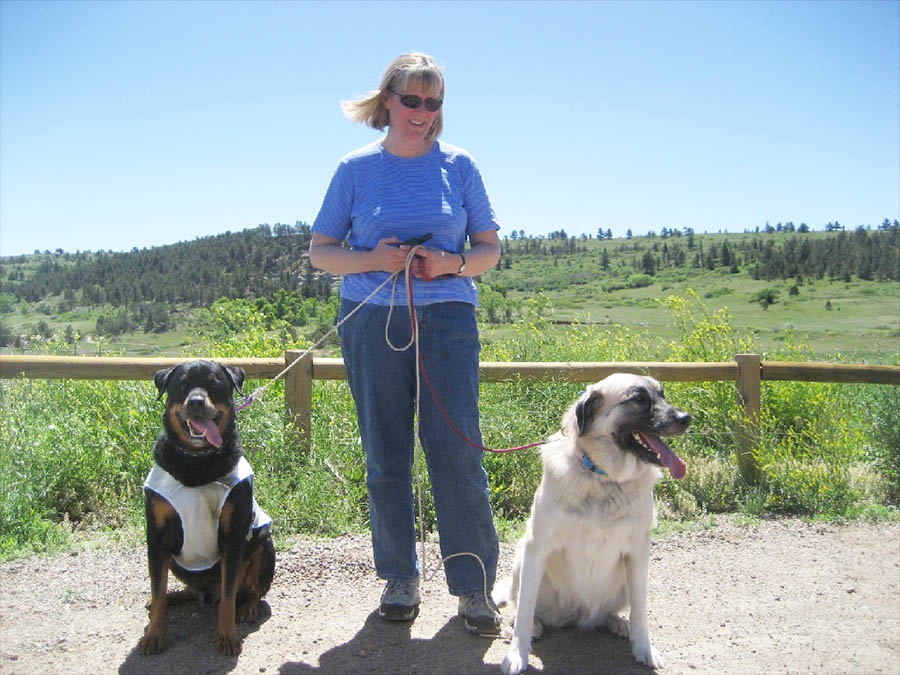Leadership Skills For Dog Owners
Dogs are pack animals. By adopting a dog, you have made him part of your pack or family. In order to lead your dog, you must attain his respect through leadership. Leadership is an attitude, a state of mind. It’s not about strength or harshness. Leaders are fair, kind, and consistent teachers. Dog training is like a savings account. Time invested now will pay off dividends in years of good companionship. Dogs can sense leadership in a person by observation. Being mostly non-verbal communicators, dogs are good at observing and interpreting the actions of their humans. By practicing these leadership skills for dog owners, you can have a more well-behaved dog.
1) Delay Gratification to Show Authority
Your dog loves games and attention from you. Interact with her more, not less. However, “obeying” her demands EVERY time gives the message that she’s always in charge. If she is attention seeking, she may try nosing, pawing, or barking at you. Ignore this behavior or ask for another such as a sit. When she is quiet and still, wait 5 – 15 seconds, then reward with attention or play. Teach your dog to “wait” before moving through doors or jumping in a vehicle. People, especially children, always go first.
2) Use Food as a Leadership Tool
Nothing in life is free. We must go to work each day to earn a paycheck. Your dog’s paycheck is attention from you, play, walks, food, etc. Free feeding or leaving a full bowl of food down at all times deprives you of an excellent leadership opportunity. Feed your dog twice a day and pick up his bowl after 15 minutes. Ask your dog to sit or do other obedience exercises in exchange for putting his bowl down.
Saving some of his food for hand feeding during training exercises will improve your leadership even more. Dogs fed by hand or from a bowl in the hand learn to associate hands with good things. Scheduled meals also help regulate potty breaks. Avoid strenuous exercise after a meal. If your dog spends long periods of time alone, deliver part of his meal in a toy like a “Buster Cube” or Kong so he gets some mental stimulation as he works for his meal.
3) Regulate Resting Places
We love our dogs and want them to be near us and comfortable, but allowing them to rest on your furniture sends the wrong message. If you allow this behavior, it teaches your dog he is your equal, not your subordinate. Give your dog his own place where he can relax without worry, such as a crate or dog bed. Even though it can be hard to say no, it’s best to avoid allowing your dog to go on the furniture or bed.
4) Body Language and Personal Space
Dogs are very aware of personal space. You can use this to move your dog around. Leaning into your dog and making direct eye contact tells your dog to “back off’ or return to where I asked you to stay. Looking away, leaning back, or walking away communicates to move toward you.
5) Improve Greeting Manners
A knock at the door is great excitement for a dog. Take control of this situation and avoid jumping by teaching your dog to sit and wait at an appropriate location rather than storming the door. A target spot such as a carpet square or dog bed works great for this. Be sure to ask your friends to greet the dog on this location so he begins to associate that spot with good things.
6) Establish Leadership Through Play
Your dog loves attention, and playing games is fun for both of you. It also presents an opportunity to establish yourself as a leader, particularly during games of tug and fetch. Follow these rules to establish yourself as a leader through play.
- Rule #1 – You start the game. Put toys away until ready to play.
- Rule #2 – No grabbing. If your dog grabs or leaps for the toy, say “oops” and hide it behind your back. When he is no longer grabbing, offer it again.
- Rule #3 – You win most of the time. Winning means you get the toy. At first, you may need to offer an irresistible treat as you say “give.” He’ll have to drop the toy to eat the treat and you have won. As soon as he devours the treat, throw the ball again or offer the tug.
- Rule #4 – Use time-outs as needed. If your dog’s teeth make contact with your hand, say “oops” and put the toy away for a few minutes.
- Rule #5 – Supervise children. Very young children should not play tug or ball with a dog until his self-control is impeccable. Always supervise children.
- Rule #6 – You end the game. You decide when the game is over, not your dog. You control the good stuff.
7) Relax for Grooming
Your dog needs to learn to tolerate handling of his feet, ears, and body so that you can brush her, bathe her and clean off muddy paws when needed. Do this by gently massaging these areas and giving treats for allowing you to handle them without a fuss.
8) Consistency
This means every member of the family/pack is consistent with expectations. You can’t feed the dog from the table sometimes and expect it not to beg. Make sure that all members of your family use these leadership skills to become respected dog owners.

